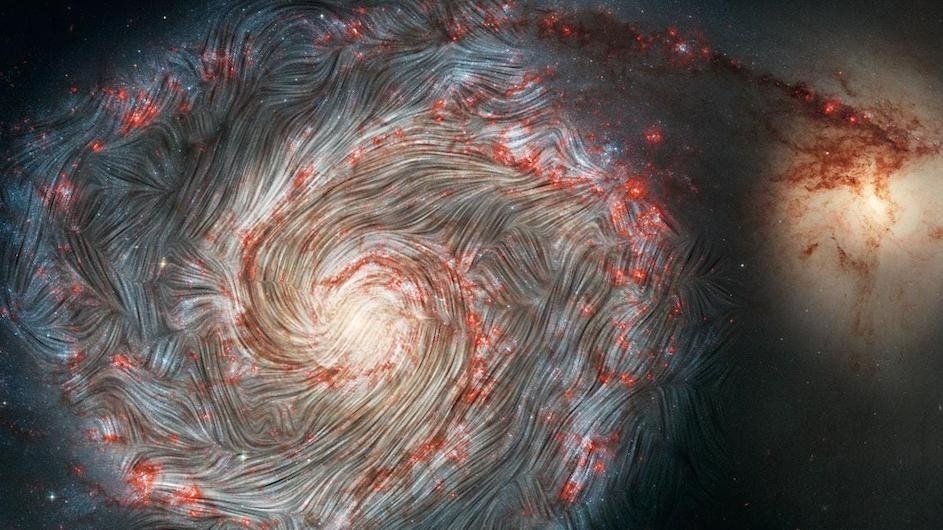For a long time, the source of magnetic fields has been debated. Now, research provides hints as to their origins.

The magnetic field in the Whirlpool Galaxy (M51), captured by NASA’s flying Stratospheric Observatory for Infrared Astronomy (SOFIA) observatory superimposed on a Hubble telescope picture of the galaxy. The image shows infrared images of grains of dust in the M51 galaxy. Their magnetic orientation largely follows the spiral shape of the galaxy, but it is also being pulled in the direction of the neighboring galaxy at the right of the frame. Image Credit: NASA, SOFIA, HAWC+, Alejandro S. Borlaff; JPL-Caltech, ESA, Hubble
The earth, galaxies, the stars, and the space between galaxies are all magnetized.
The more places researchers have looked for magnetic fields throughout the universe, the more they have discovered. However, the question of why that is the case and where those magnetic fields come from has remained a puzzle and a subject of continuing scientific inquiry.
A new study headed by Columbia scientists provides deep knowledge into the source of such fields. The team utilized models to show that magnetic fields might voluntarily emerge in turbulent plasma.
Plasma is a kind of matter that has been frequently discovered in ultra-hot surroundings like that near the surface of the sun, but plasma is also scattered throughout the universe in low-density environments, like the expansive space between galaxies; the team’s study concentrated on those low-density environments.
Their simulations displayed that, besides producing new magnetic fields, the turbulence of those plasmas could also amplify magnetic fields as soon as they have been generated, which aids in describing how magnetic fields that source on small scales could sometimes ultimately reach to stretch throughout vast distances.
The study was written by astronomy professor Lorenzo Sironi, astronomy research scientist Luca Comisso, and astronomy doctoral candidate Ryan Golant.
This new research allows us to imagine the kinds of spaces where magnetic fields are born: even in the most pristine, vast, and remote spaces of our universe, roiling plasma particles in turbulent motion can spontaneously give birth to new magnetic fields.
Lorenzo Sironi, Astronomy Professor, University of Columbia
Sironi added, “The search for the ‘seed’ that can sow a new magnetic field has been long, and we’re excited to bring new evidence of that original source, as well as data on how a magnetic field, once born, can grow.”
Journal Reference
Sironi, L., et al. (2023) Generation of Near-Equipartition Magnetic Fields in Turbulent Collisionless Plasmas. Physical Review Letters. doi.org/10.1103/PhysRevLett.131.055201